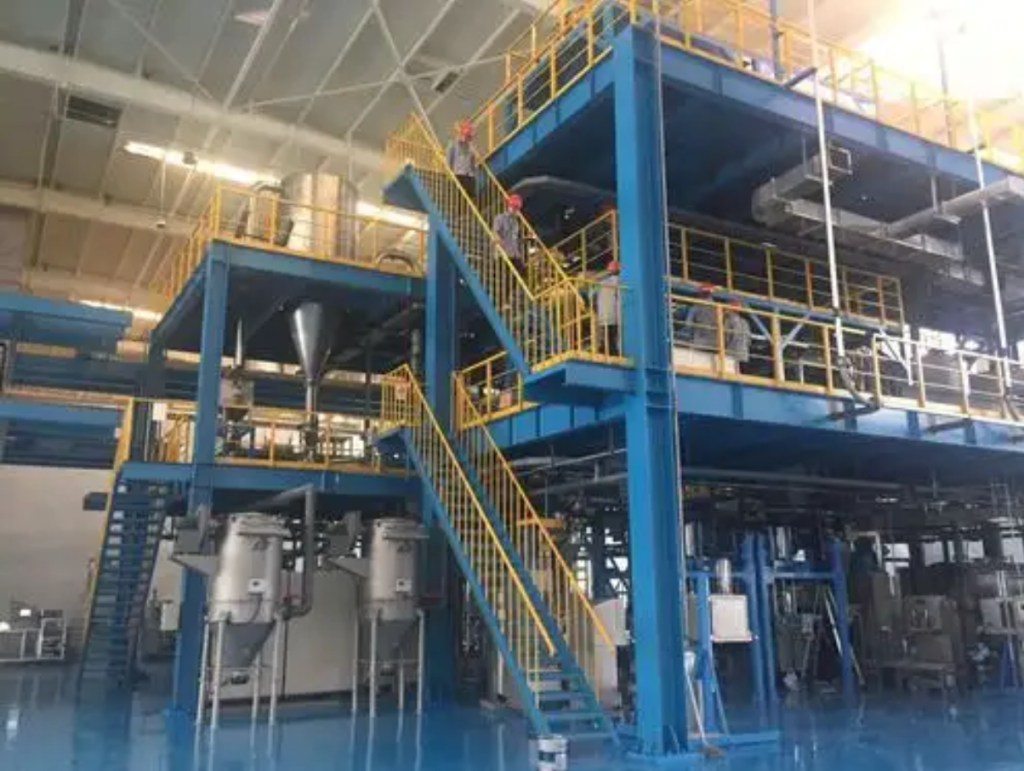What Are the Different Methods of Graphene Production?
Graphene can be produced using various techniques, each with its advantages, limitations, and applications. The choice of production method depends on the desired graphene quality, scalability, and cost-effectiveness. Below are the main graphene production methods categorized into top-down and bottom-up approaches.

1. Top-Down Methods (Starting from Bulk Graphite)
These methods involve breaking down graphite into single or few-layer graphene sheets.
(1) Mechanical Exfoliation (Scotch Tape Method)
- Process: Uses adhesive tape to peel off thin graphene layers from graphite.
- Advantages: Produces high-quality, monolayer graphene.
- Limitations: Not scalable; mainly used in research.
- Applications: Fundamental research, nanoelectronics.
(2) Liquid-Phase Exfoliation (LPE)
- Process: Graphite is dispersed in a solvent and exfoliated using ultrasonication or shear mixing.
- Advantages: Scalable, cost-effective for bulk graphene production.
- Limitations: Produces graphene with defects and multiple layers.
- Applications: Coatings, inks, polymer composites.
(3) Electrochemical Exfoliation
- Process: Uses an electrochemical reaction to separate graphene layers from graphite in an electrolyte solution.
- Advantages: Faster and more efficient than LPE, can yield high-quality graphene.
- Limitations: Difficult to control layer thickness and defects.
- Applications: Energy storage, sensors, conductive coatings.
(4) Oxidation-Reduction (Graphene Oxide Route)
- Process: Graphite is oxidized to form graphene oxide (GO), which is then chemically or thermally reduced back to graphene.
- Advantages: Scalable, cost-effective, produces functionalized graphene.
- Limitations: Reduction process may leave residual oxygen, lowering conductivity.
- Applications: Water filtration, drug delivery, conductive inks.
2. Bottom-Up Methods (Building Graphene from Carbon Atoms)
These methods synthesize graphene from carbon sources rather than breaking down graphite.
(5) Chemical Vapor Deposition (CVD)
- Process: Carbon-containing gases (e.g., methane) decompose on a metal catalyst (e.g., copper, nickel), forming a single-layer graphene sheet.
- Advantages: Produces high-quality, large-area monolayer graphene.
- Limitations: Expensive, difficult to scale, requires post-processing for transfer.
- Applications: Transparent conductive films, flexible electronics, sensors.
(6) Plasma-Enhanced Chemical Vapor Deposition (PECVD)
- Process: Similar to CVD but uses plasma to enhance graphene growth at lower temperatures.
- Advantages: Faster growth, better control over graphene thickness.
- Limitations: More complex equipment required.
- Applications: Nanodevices, microelectronics.
(7) Epitaxial Growth on Silicon Carbide (SiC)
- Process: Heating silicon carbide at high temperatures (~1200-1600°C) causes silicon to evaporate, leaving behind graphene layers.
- Advantages: High-purity graphene, compatible with semiconductor industry.
- Limitations: Expensive, limited substrate availability.
- Applications: High-speed electronics, quantum computing.
(8) Bottom-Up Organic Synthesis
- Process: Carbon atoms are chemically assembled into graphene-like structures.
- Advantages: Precise control over graphene shape and size.
- Limitations: Not practical for large-scale production.
- Applications: Molecular electronics, nanomedicine.
3. Emerging and Novel Methods
Researchers are developing innovative approaches to improve graphene production.
(9) Flash Joule Heating
- Process: Applying high-voltage electrical pulses to carbon-rich materials (e.g., coal, plastic waste) to instantly convert them into graphene.
- Advantages: Ultra-fast, low-cost, scalable, environmentally friendly.
- Limitations: Still in early-stage development.
- Applications: Mass graphene production, sustainable materials.
(10) Bacterial or Green Synthesis
- Process: Using bacteria or biological processes to produce graphene.
- Advantages: Eco-friendly, low-energy consumption.
- Limitations: Low yield, slow process.
- Applications: Biomedicine, eco-friendly coatings.
Comparison of Graphene Production Methods
| Method | Quality | Scalability | Cost | Key Applications |
|---|---|---|---|---|
| Mechanical Exfoliation | High | Low | High | Research, nanoelectronics |
| Liquid-Phase Exfoliation | Medium | High | Low | Coatings, inks, composites |
| Electrochemical Exfoliation | Medium-High | Medium | Medium | Energy storage, sensors |
| Graphene Oxide Reduction | Medium | High | Low | Filtration, conductive inks |
| Chemical Vapor Deposition (CVD) | High | Medium | High | Flexible electronics, sensors |
| Plasma-Enhanced CVD | High | Medium | High | Microelectronics |
| Epitaxial Growth on SiC | High | Low | High | High-speed electronics |
| Flash Joule Heating | Medium | High | Low | Mass production, sustainable applications |
Conclusion
There is no single “best” method for producing graphene—each has its strengths and trade-offs. For industrial-scale production, liquid-phase exfoliation and chemical vapor deposition are the most commonly used methods. For high-purity applications, epitaxial growth and mechanical exfoliation remain key. As graphene research advances, new techniques such as Flash Joule Heating could revolutionize mass production, making graphene more affordable and accessible for various industries.
With ongoing improvements in production methods, graphene’s full commercial potential will become increasingly realized in fields like electronics, energy storage, composites, and medical applications.

